If you wonder how to cream butter and sugar, you came to the right place! Properly performing the creaming method in baking will produce baked goods with a lovely light and airy texture! It’s the most popular mixing method and a super easy technique, but there are a few simple rules that you need to follow. So I’ve created this detailed baking guide that covers the steps involved and everything that you need to know about the creaming method for the best baking experience!
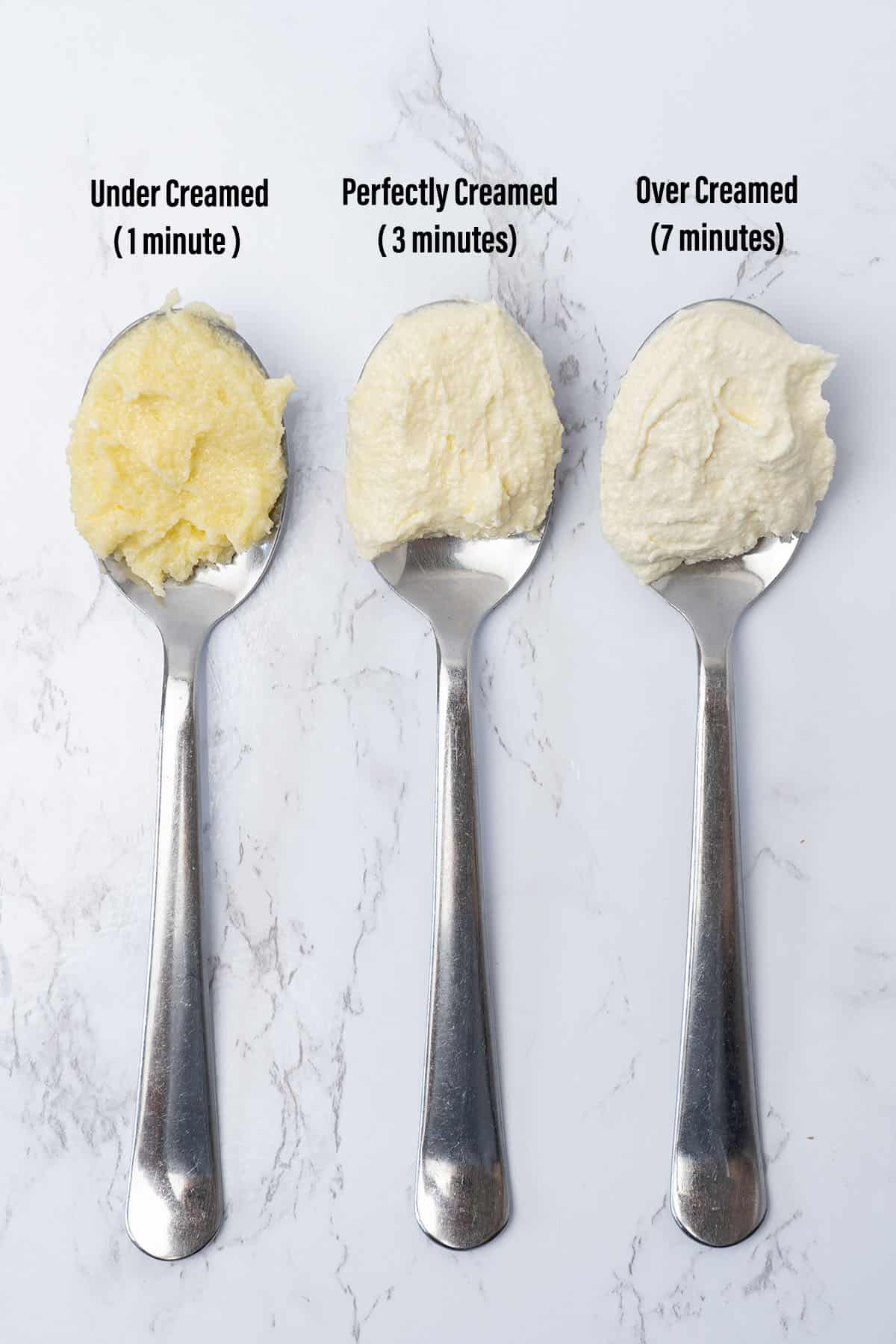
Jump to:
- What is the creaming method
- Why use the creaming method
- What are the steps of the creaming method
- 1. How to soften butter
- 2. How long do you cream butter and sugar
- 3. How to add the egg to the batter
- 4. How to add the rest of the ingredients to the batter
- What is reversed creaming method
- Expert tips
- Equipment notes
- How To Cream Butter and Sugar FAQs
- More Baking Guides
- How To Cream Butter and Sugar
What is the creaming method
The creaming method is one of the most important mixing methods in baking. Incorrect recipes often call the process 'beat butter', but really creaming is a more appropriate description.
So what is creaming butter? Basically, it’s just the process of whipping room-temperature softened butter together with sugar at a moderately high speed until the mixture is fluffy and pale in color. Typically you would use your stand mixer with a paddle attachment or alternatively, an electric hand mixer. That’s it! You might perform the creaming method by hand with a whisk but it will take quite some work and time.
What is the creaming method used for? We almost always use this method when making cakes, eg. this lotus Biscoff cake, cupcakes eg. Nutella cupcakes, or cookies eg. chocolate chip walnut cookies.
Why use the creaming method
Properly performing this technique is a total baking game changer! And why is creaming so important in baking? It’s all about science.
The creaming method ingredients are simple: butter and sugar. When room temperature butter and sugar are whipped together, the sugar is cut into the fat of the butter. When this happens, small air bubbles are formed that get trapped in the fat, which makes the mixture increase in volume. Then when the batter or dough is baked it expands even more in the oven almost like a leavening agent such as baking powder.
So why is the creaming method important? Because the final result is professional quality baked goods that turn out super light and fluffy, just like my fluffy Pink Cake.
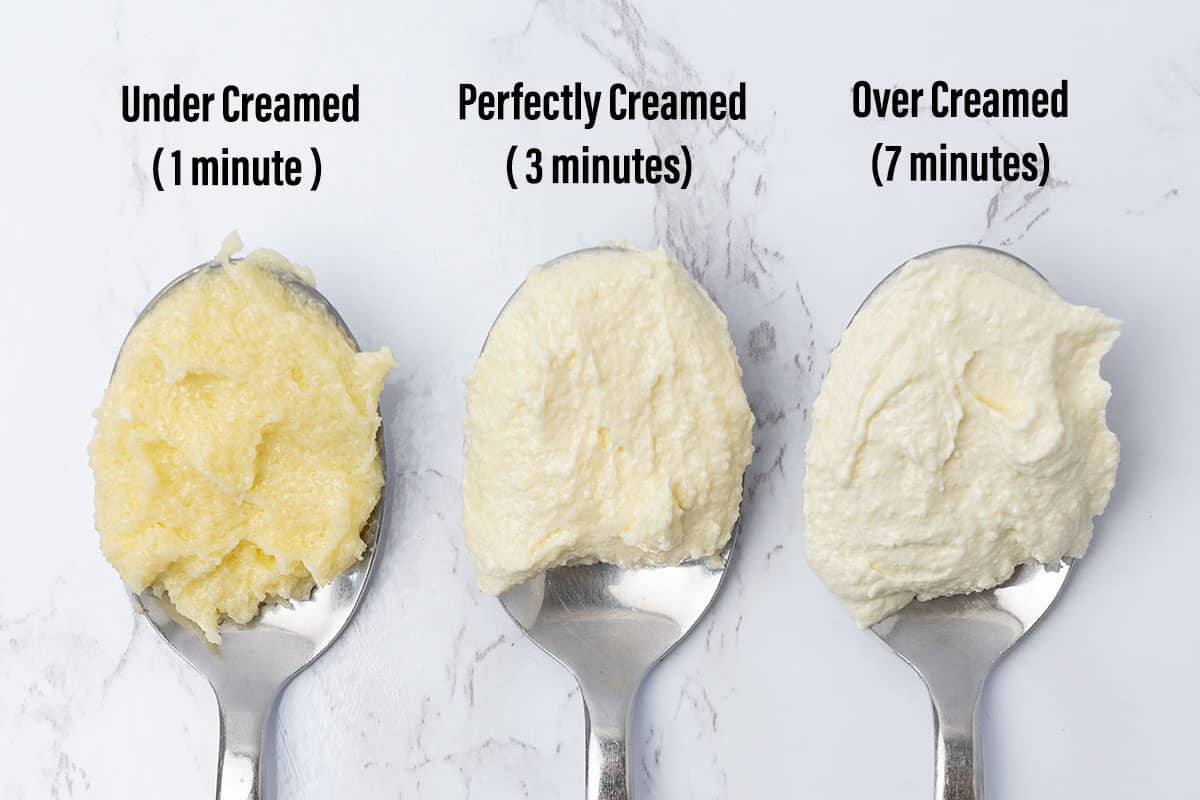
What are the steps of the creaming method
Depending on what you're baking, the technique can vary a tad. Some creaming method recipes will have you cream the butter for a bit before adding the sugar and other recipes will have you cream them together immediately. Yet, the creaming method in baking always refers to the process of whipping softened butter together with sugar. And it’s always the first step of the recipe and all the ingredients always need to be at room temperature.
I should also mention that you can use homemade butter when performing the creaming method in baking as well as butter substitutes if you prefer.
So here are the 4 key creaming method steps:
1. How to soften butter
Your butter must be at room temperature before you even begin the creaming method in baking! The easiest thing to do is just to set the butter out on your kitchen counter a couple of hours before you start baking. But if you forgot, don’t worry! I’ve written an entire article on how to soft butter quickly!
Here are a few of my favorite ways to quickly soften butter without accidentally melting it!

How to soften butter without a microwave
- Cut it into cubes and let it sit for 15 minutes at room temperature.
- Grate the butter onto a plate and then give it about 5-7 minutes to get soft.
- Pound the batter in a plastic ziplock with a rolling pin or meat mallet. Once it’s flat, let it sit for about 5-10 minutes to soften up more.
- Cube the butter and put it on a plate. Heat a bowl with water in the microwave for 3 minutes. Then, dump out the hot water and cover the butter with the warm bowl for about 5 minutes.
How to soften butter in the microwave
- Microwave a ball of water for 3 minutes. Then, remove the bowl of water and place butter chunks inside the microwave for about 8-10 minutes. The humidity in the microwave will soften the butter, do not turn the microwave on.
- Put the whole stick of butter in the microwave at 30% power for 5 seconds. Next, flip it over and microwave it for another 5 seconds at 30% power. Then just continue this process until the butter comes to room temperature. This is the quickest way to soften butter and will only take less than a minute, but be careful not to melt it if you choose this option.
For more information on each of the methods, check my how to soft butter quickly article!
2. How long do you cream butter and sugar
How long you need to cream the butter and sugar together can vary depending on whether you are using a stand mixer, an electric hand mixer, or doing it by hand and also how much butter you are about to cream. It can take as little as 3 minutes or as much as 6 minutes. However, when the creaming process is complete the mixture will always be light and fluffy, pale yellow in color, and have nearly doubled in volume.
Once the butter and sugar reach the proper consistency, you need to stop creaming. This new mixture you just created is called an emulsion. If you continue beating you risk overmixing, which will cause the bubbles that you just created to begin to deflate and your baked goods will not rise properly.
How long you cream butter and sugar for cookies depends on your desired cookie texture. For example, if you want lighter pecan chocolate chip cookies you should fully cream the mixture. Or, if you want chewier coffee cookies you should cream the mixture for a shorter period of time.
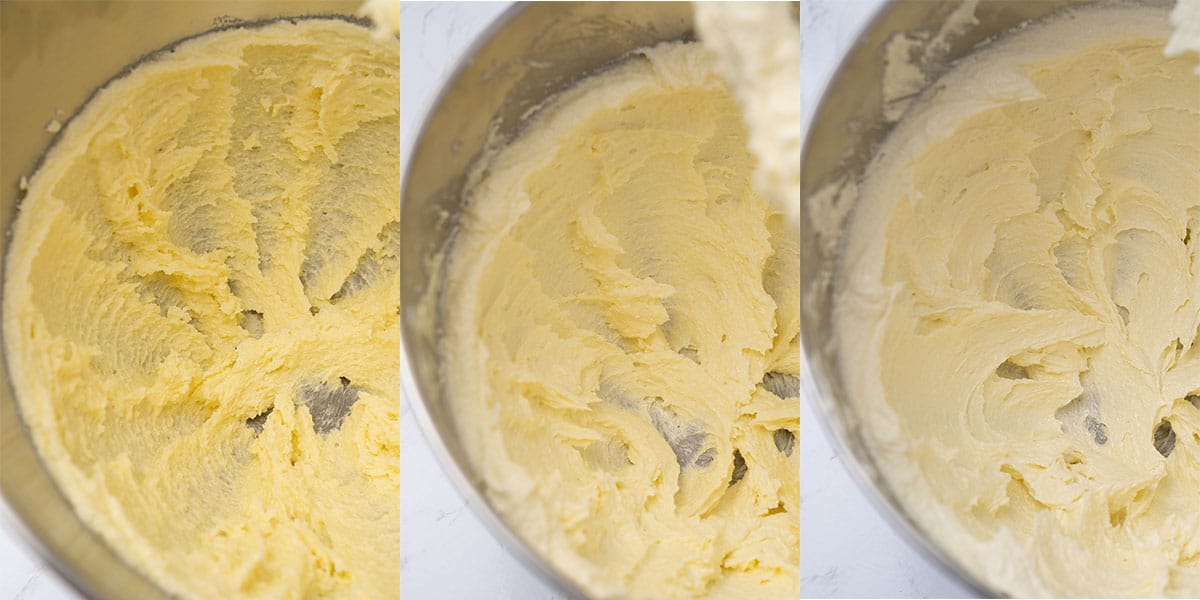
3. How to add the egg to the batter
Once the creaming process is complete, the next step is to mix the eggs in at a high speed. This is done by adding each egg one by one, making sure that it is completely blended into the batter before adding the next. If you add more than one egg or cold eggs, you will find that the batter might even break at this point.
You’ll also need to scrape down the sides of the bowl from time to time throughout the process. The eggs are added in this way to strengthen the bond between the butter and sugar, which ensures that the emulsion remains stable as I explain in my what do eggs do in baking article.
4. How to add the rest of the ingredients to the batter
After the eggs have been fully incorporated into the butter and sugar, then you can begin adding all the remaining wet and dry ingredients. Yet, how you add them is dependent upon whether you are making a cake recipe or cookies.
For cakes and cupcakes - First, turn the mixing speed down to low. Next, add ⅓ of the dry ingredients followed by half of the wet ingredients. Then scrape down the sides of the bowl and add another ⅓ of the dry ingredients followed by the other half of the wet ingredients. Finally, scrape down the bowl once more and then add the remaining ⅓ of the dry ingredients. It’s important to always start and end with the addition of the dry ingredients because the creamed butter mixture can’t absorb much liquid. So this is how you cream pound cakes like this Marble Loaf Cake.
For cookies - Mix in all the dry ingredients on low speed just until the flour is incorporated into the dough. Then mix in any add-ins such as chocolate chips or nuts. This is how I make most of my cookies, like these chocolate chip cookies without brown sugar.

What is reversed creaming method
Also called the paste method, the reverse creaming method is performed by whipping room-temperature butter into dry ingredients until the mixture is a sandy texture. These dry ingredients can include flour, sugar, baking powder, baking soda, and salt. Then, the liquid ingredients are added followed by the eggs, which are blended into the batter one by one just like traditional creaming. The final result should be a thicker cake batter that is still pourable.
The purpose of reverse creaming is to slow down the formation of gluten, which results in cakes that have a tighter crumb making them more dense but still very moist and soft in texture. Reverse creaming method for cakes, such as large layer cakes that need to be sturdy, is often performed. You will also find some cookie recipes that use reverse creaming in order to create cookies that bake completely flat, which makes them perfect for decorating.
Expert tips
- You must use softened room-temperature butter. This means that the butter is still cool to the touch and not melted at all.
- The mixture is considered done creaming once it’s light, fluffy, and pale yellow in color. It should have also almost doubled in volume.
- The creamed mixture will still feel a little gritty if you rub it together with your fingers. This is completely normal.
- You need to stop creaming the moment the butter and sugar reach the correct color and texture. If you continue mixing you will break down all the little air pockets that you just created.
- You must add room-temperature eggs one by one to the creamed butter and sugar.
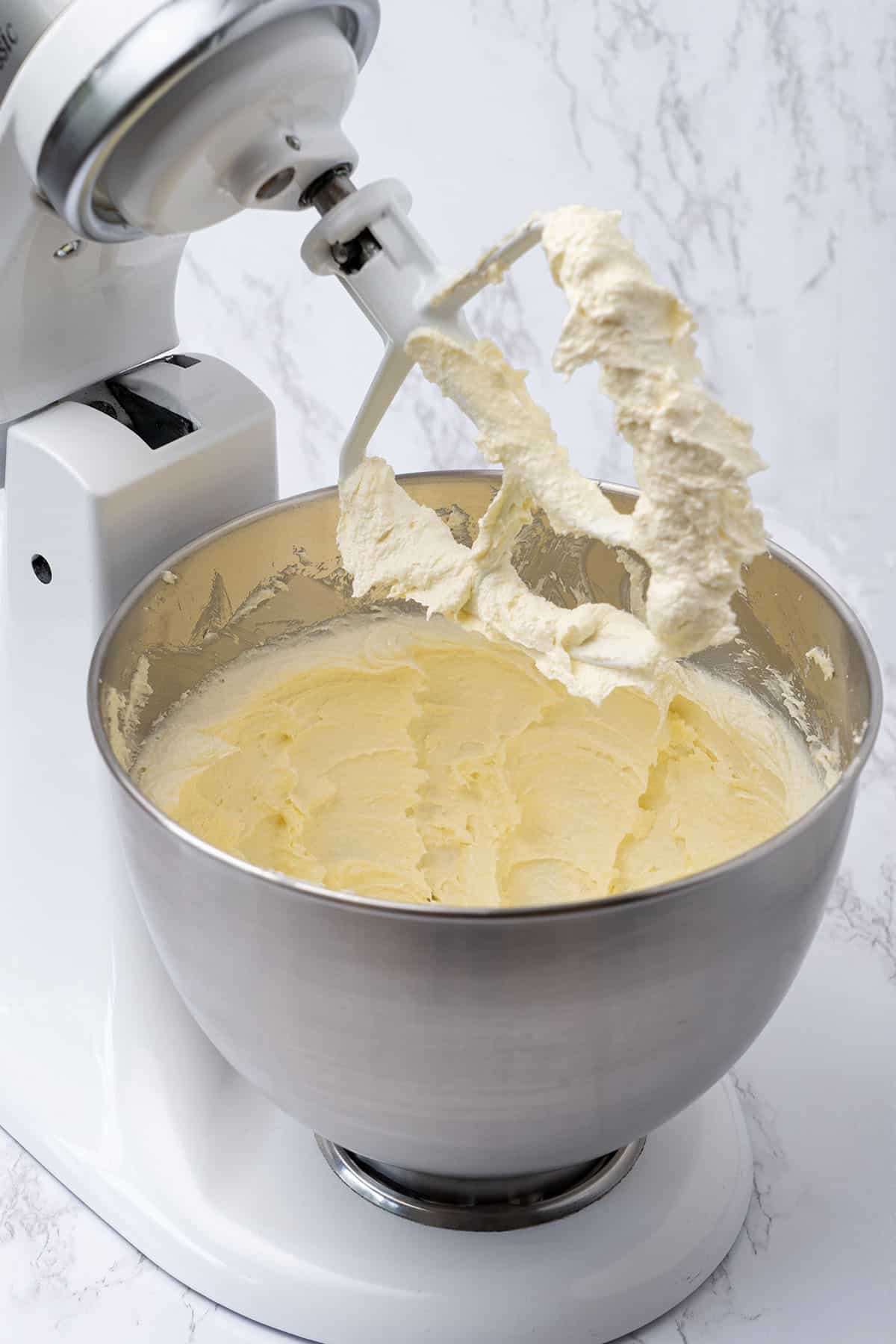
Equipment notes
There are a few tools that you will need in order to produce the best results such as a stand mixer or an electric hand mixer to properly whip the butter and sugar together. You will also need a good-quality rubber spatula to scrape down the sides of your mixing bowl.
How To Cream Butter and Sugar FAQs
Yes, most cupcakes, cakes, and cookies use the creaming method.
Your cake will not rise properly in the oven. This will cause the cake to turn out both flat and dense.
Creaming butter and sugar by hand using a hand whisk can take a very long time (10+ minutes) and require nice muscles!
The standard is a couple of minutes or until the mixture becomes fluffy and pale in color.
Yes, you can! Anything longer than 10 minutes (in a stand mixer) can cause too fluffy texture that might result in an improper rise and deflation in the oven.
Just until combined, a few seconds. Make sure that the egg is always at room temperature and add the eggs one by one to the batter, even better if you lightly whisk it and pour in slowly while the mixer is on.
More Baking Guides
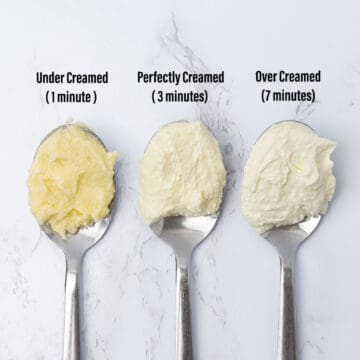
How To Cream Butter and Sugar
Equipment
- Digital scale
Ingredients
- 167 g (¾ cups) Unsalted butter room temperature
- 150 g (¾ cups) Granulated sugar
- 2 Eggs room temperature
- 167 g (1⅓ cups) All purpose
- ¼ taspoon Salt
- 1½ teaspoon Baking powder
- 40 g (2½ tablespoon) Whole milk room temperature
- ½ tablespoon Vanilla extract
US customary cup measurement is an indicative figure only. Measure the ingredients with a digital scale by weight (gram). Baking is art but also science which requires precision and accuracy.
Instructions
- Put the room temperature butter and sugar in the bowl of a stand mixer. Then use the paddle attached to cream them together on medium-high speed until the mixture is a pale yellow, fluffy, and has doubled in volume. You will need to stop the mixer to scrape down the sides of the bowl and beater a few times while mixing. This step can also be performed with an electric hand mixer.
- Add the room temperature eggs one at a time to the creamed mixture making sure that each one is fully incorporated before adding the next.
- Sift the flour, salt, and baking powder together, which are your dry ingredients. Then combine the room temperature milk together with the vanilla extract, which are your wet ingredients.
- Turn the mixer down to low speed. Now, add ⅓ of the dry ingredients followed by ½ of the wet ingredients. Then add another ⅓ of the dry ingredients followed by the other ½ of the wet ingredients. Finally, add the remaining ⅓ of the dry ingredients. Be careful not to overmix the batter.
- To bake, divide the creamed cake batter equally between 3 greased and dusted round cake pans. Next, bake them at 175 C / 347°F (no fan) for 20 min or until a toothpick inserted in the center comes out clean. Then allow them to completely cool on a wire cooling rack before frosting.
Notes
- Always use unsalted butter in dessert recipes, but make sure you add the salt stated in the recipe to balance out the sweetness.
- The egg, butter, and milk should be used at room temperature.

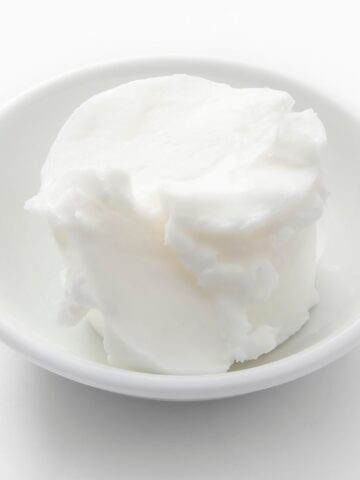
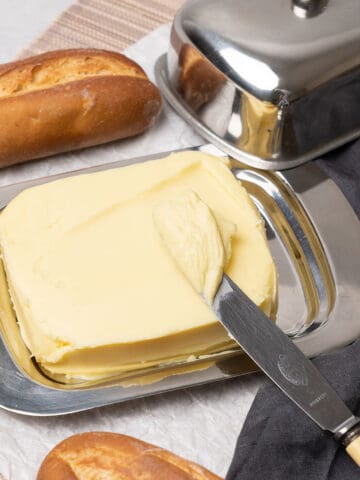
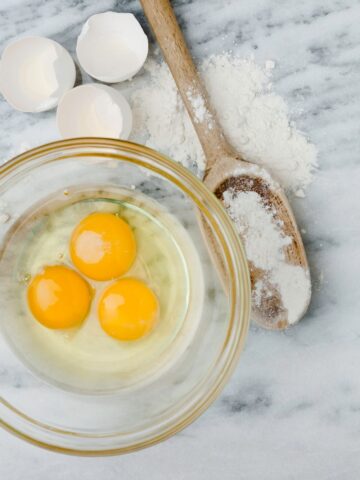
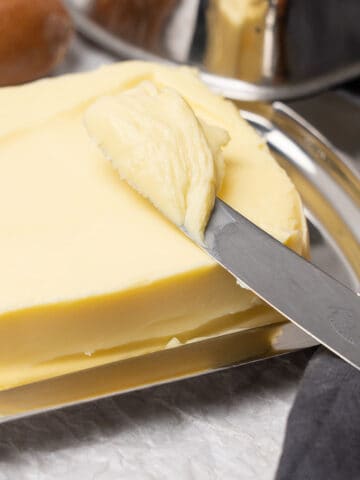
Leave a Reply